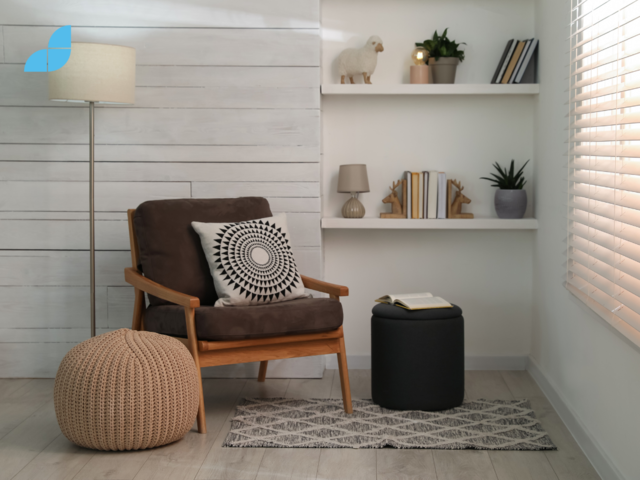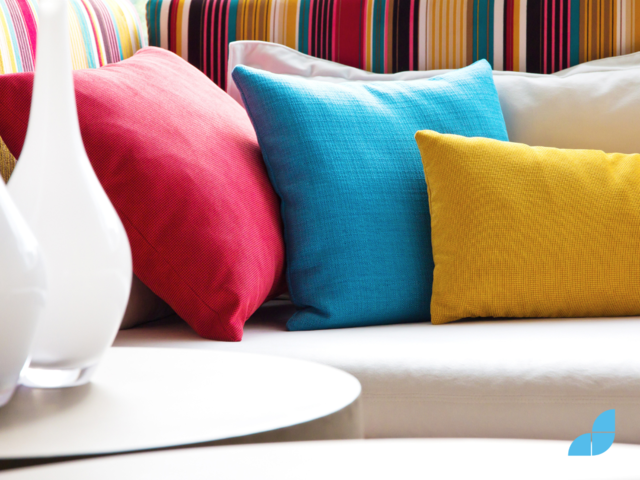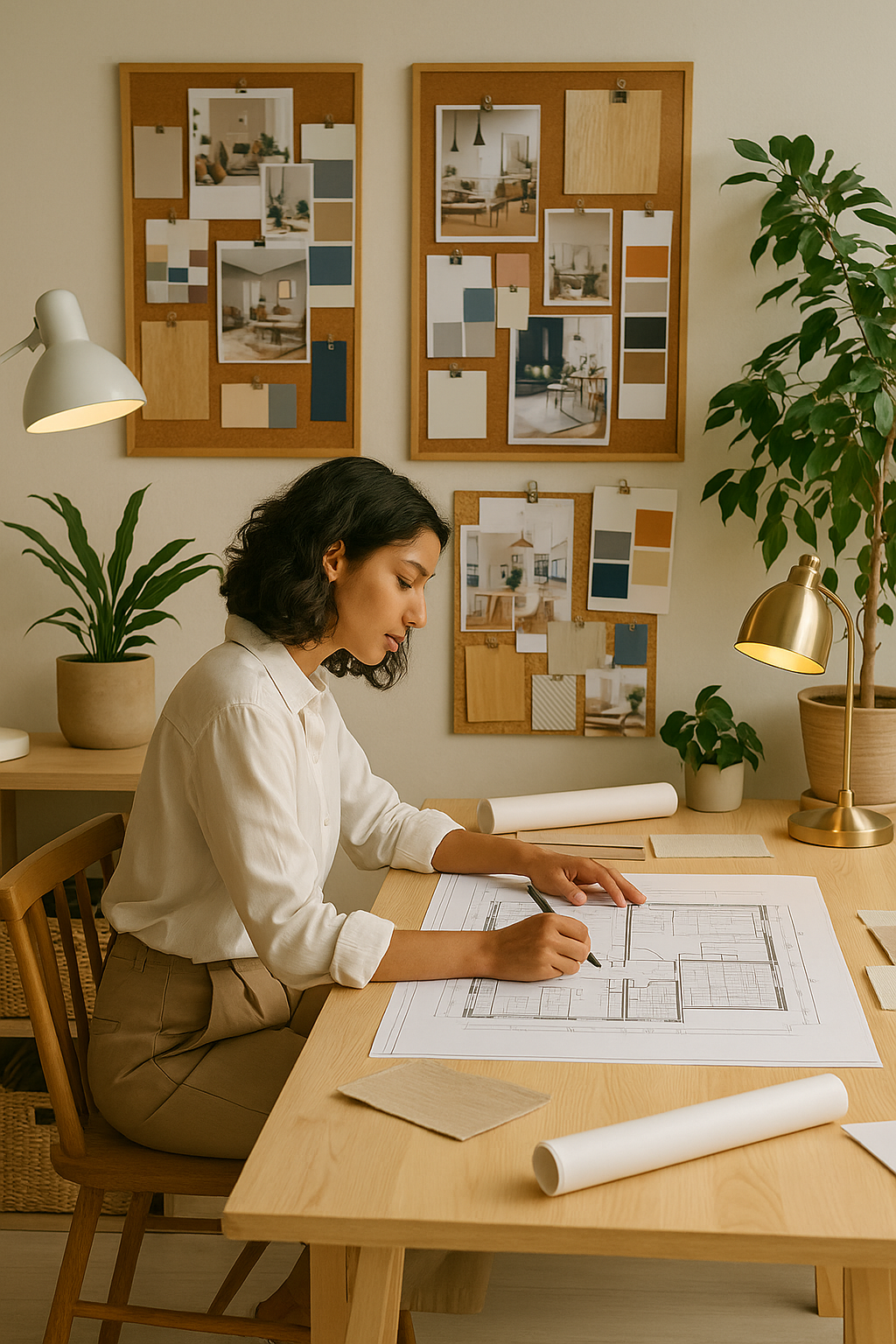The art of interior design begins with a problem that finishes with a design solution. Interior design is so much more than pretty cushions and paint colours, it is the marriage of creativity and functionality. It is for this reason that every element of a design scheme holds value. Knowing that every design decision will inform the complete design; the aim of a successful designer is to achieve a sense of balance and harmony. Which brings us to fabric! Not to be underestimated, fabric is a vital element of any design and must not be treated with flippancy. So, with acres of fabrics and textiles, where does an interior designer start? Let’s take a look.

Things to consider when choosing the right fabric
First and foremost, a designer absolutely, positively must have at least a basic understanding of the different types of fabrics that are appropriate and available for interiors. There is a gargantuan array of options but from a designers perspective, the choice must be broken down to aesthetics, practicality and budget constraints. Here are a few common favourites for a designers fabric arsenal:
Silk: This is an elegant, high quality fabric that must be handled with care. It is a beautiful addition to a formal setting but it is a delicate fabric that is easily damaged. Silk is best reserved for drapes, wall art or lampshades as it lacks the durability needed for hard wearing areas.
Leather: This can be hard, soft or suede and is a great option for furnishings and upholstery. Leather and faux-leathers are durable and hard wearing but can also be super stylish. It is a wonderfully versatile material and can be used anywhere from seating, table tops, curtains, rugs and cushions, the list goes on.
Rayon: If you don’t have the budget for silk but still want to make a luxurious impression, then Rayon is an ideal alternative. It resembles silk but is more durable and hard working making it suitable for both drapes and upholstery.
Cotton: The humble cotton is a breathable and versatile natural option and seamlessly translates from clothing to interiors. Cotton works especially well in children's rooms and common areas.
Polyester: Best when blended, polyester stands out for its resilience and is ideal for hard wearing spaces like children's rooms.
Velvet: The go-to for opulence. Velvet has a beautiful tactile factor and can create a sensual and luxurious ambiance. Velvet fluctuates in popularity but always brings a touch of sophistication.
Microfiber: Modern and plush, microfiber is both affordable and easy to maintain, a favourite in contemporary designs.
Wool: Wool is surprisingly adaptable working as both a natural insulator and a sound absorber. Its texture and durability make it a popular choice for carpets, throws, and upholstery, particularly in colder climates or cosy settings.
But before you choose your fabrics, there are other factors to take into account. Try to balance your vision with practicality and budget and think of the entire design and how each element will interact with the other. You may love silk for example, but there’s little point on blowing the entire budget on a silk drape that will be destroyed by young children as soon as they get their sticky hands on it. Each space will have a function and an interior designer must understand how it will be used, and by whom? Is it a casual lounge, a formal dining room, or a playroom for children? A bedroom, for example, may demand soft, opulent fabrics, while a Tv room would benefit from more sturdy materials that can handle wear and tear.

Things to think about before you choose your fabrics
Durability
Whether designing a home, a hotel or a cafe, the spaces will involve people and people leave their mark. Durability in a fabric means longevity of both usability but also the aesthetic. Sturdy fabrics like microfiber, canvas, or certain leathers can withstand regular use.
Maintenance
Maintenance is the price you pay for fabrics that lack durability. Some textiles demand more attention than others. Silk, for example, is susceptible to sun damage and may require regular dry cleaning making it unsuitable for sunrooms or areas frequented by children or pets. Synthetic materials on the other hand, are easier to clean and maintain.
Texture
This is a design choice that can really elevate a scheme. Texture is a sensory addition to a space but will also give a visual edge to a potentially flat aesthetic. Balancing a variety of textures can enliven a space adding depth and complexity.
Colour & pattern
It is a well known fact that the use of colour in a space can have an emotional impact on a person. Neutral tones can be soothing, yet vivid colours can elicit an energised feeling. Think about the users of the space and choose your palette accordingly.
When it comes to pattern, size matters! Large patterns can be overwhelming in a small space but they can generate a majestic, grandiose ambiance in a larger room. But, subtle patterns can also have a profound impact on a space.
Test, test, test
Samples are a designer friend. The feeling of a fabric when it is in your hands can influence where and how it will be used. It may look soft in a photograph but if it is itchy or coarse, it will not work for upholstering a living room sofa. It is also important to examine colours, patterns and texture. Take the sample to the space you are designing and view it at different times of the day. Showroom lights or images online are often far from the appearance in situ.
Environmental & health considerations
Seek out organic, recycled or responsibly sourced textiles. There is a huge environmental problem with textile waste and landfills but designers are becoming more and more conscientious with their choices. Some fabrics are treated with chemicals that emit VOCs (volatile organic compounds) so, make sure to do some research before you make a purchase. There are lots of beautiful and sustainable options available.
Budget
Many projects are dictated by a budget but there are smart ways to allocate your spend. Sometimes designers feel a cheaper fabric option is a better solution for a design but keep in mind that in some circumstances, investing in high-quality fabric might save money in the long term, especially for pieces that will be frequently used.
Client
There are many steps and endless options when it comes to fabrics, but a designer must also trust their own abilities and more importantly, consult with the client. If your client has specified a particular fabric, unless you believe it is a disastrous decision, there's a good chance it will make them happy every time they enter the space.
Fabric, colour, texture, pattern, space, light, functionality and the list goes on. There are numerous design elements that need to come together in harmony and fabric is an integral part of this puzzle. As you embark on your voyage through swathes and rolls of fabric, these tips should help you choose wisely and create a beautiful, functional and stylish space as an interior designer.
Are you intrigued by the world of fabrics and want to learn more about interior design? Our carefully curated courses provide a comprehensive understanding of the nuances of designing flawless spaces. Whether you're a novice or a seasoned professional, our courses will sharpen your abilities, introduce you to industry trends, and help you master the art of interior design. Join us on an adventure of creativity and innovation.

